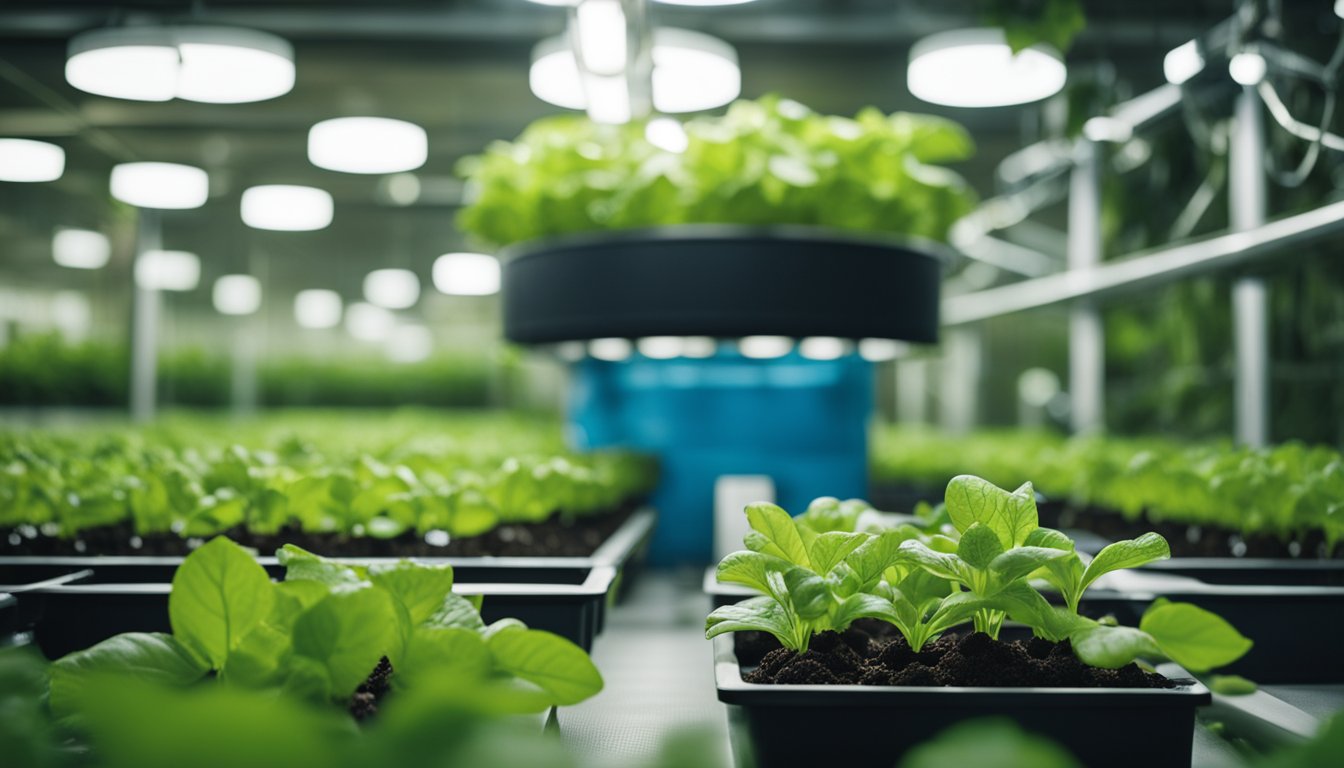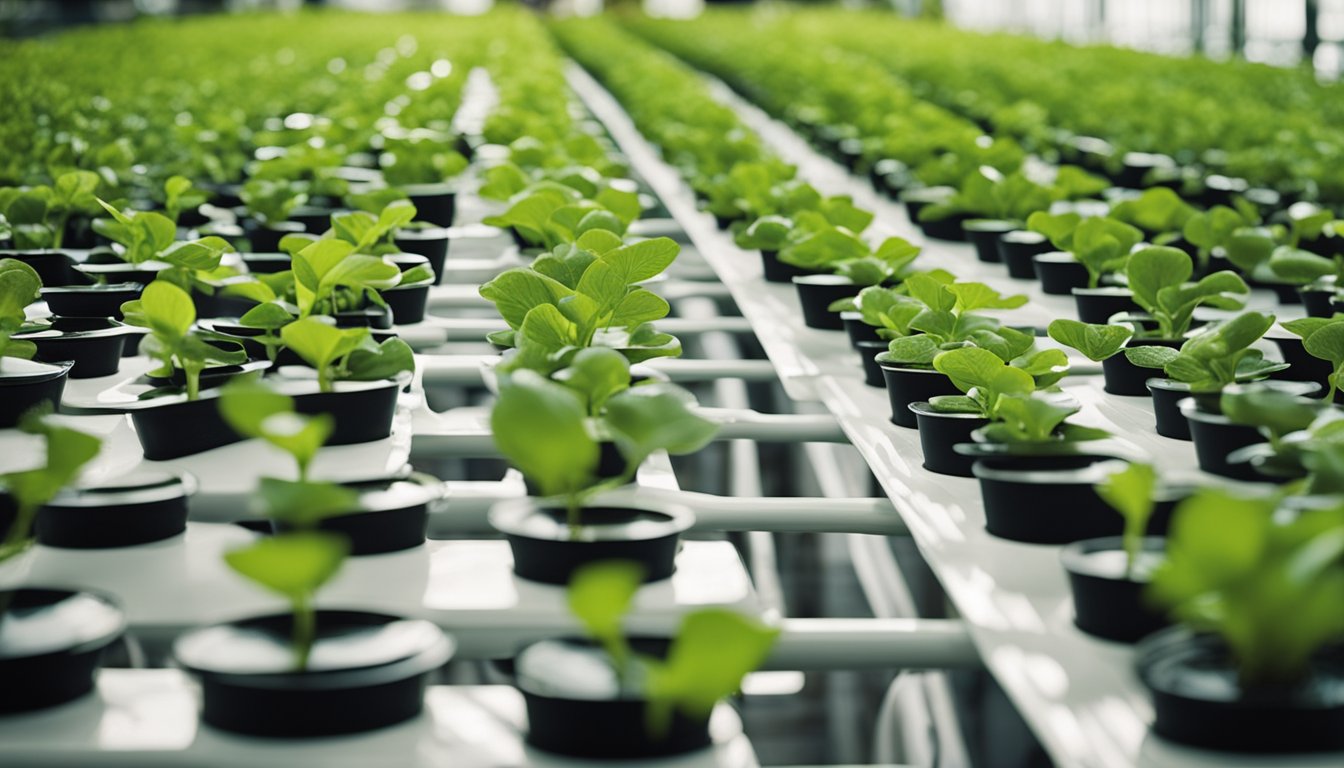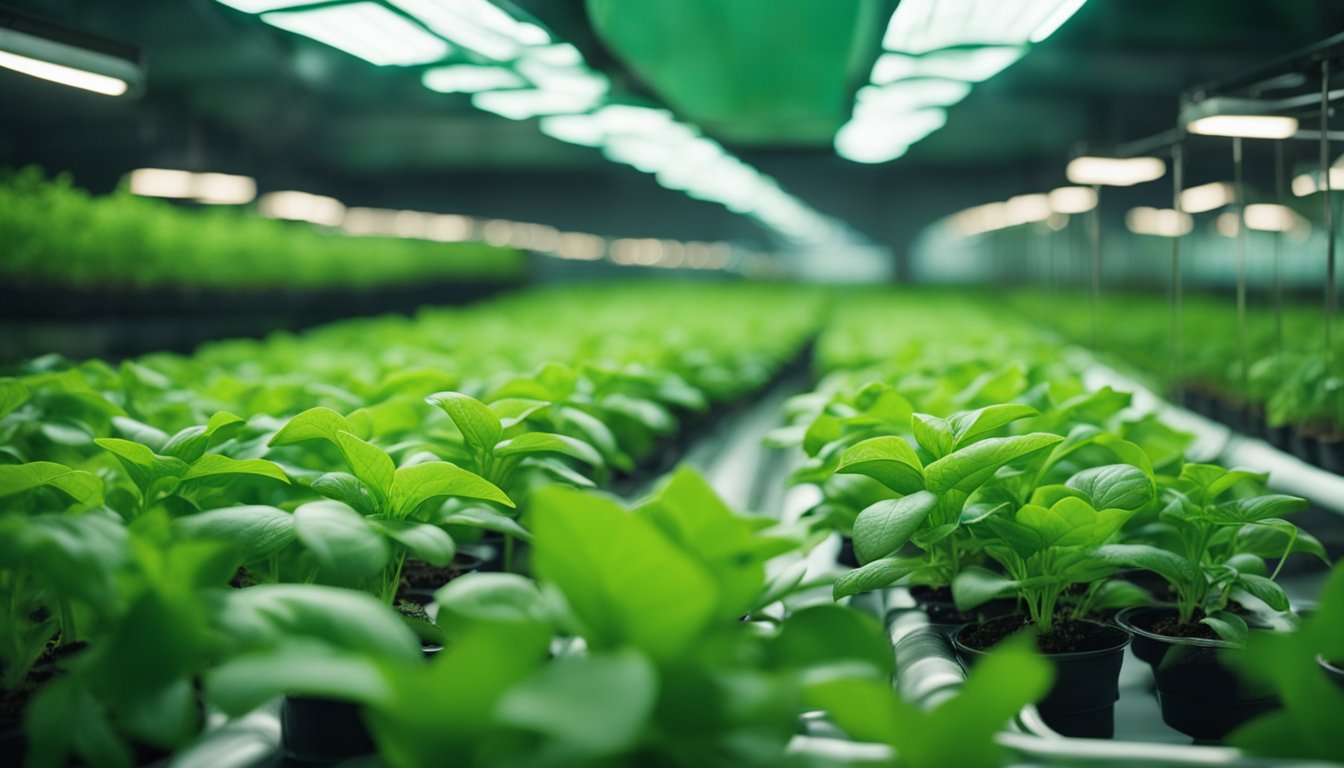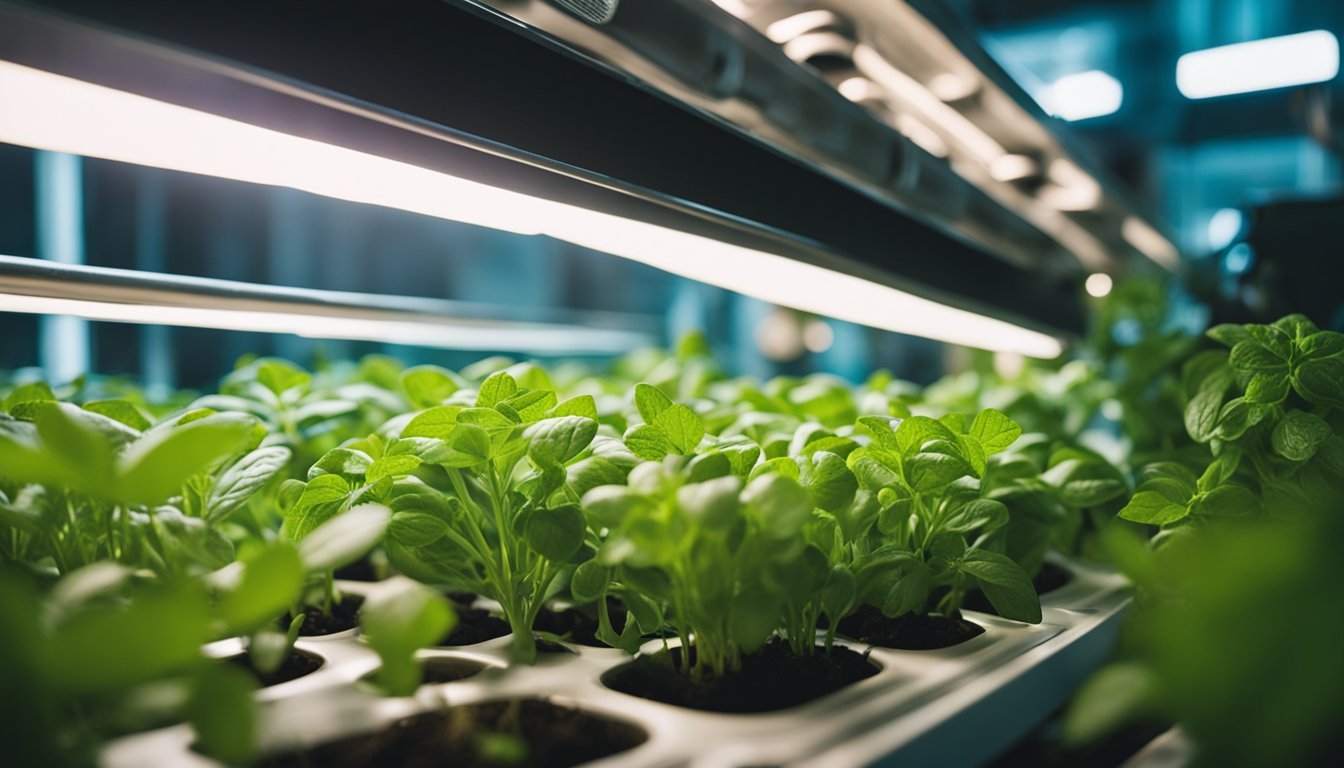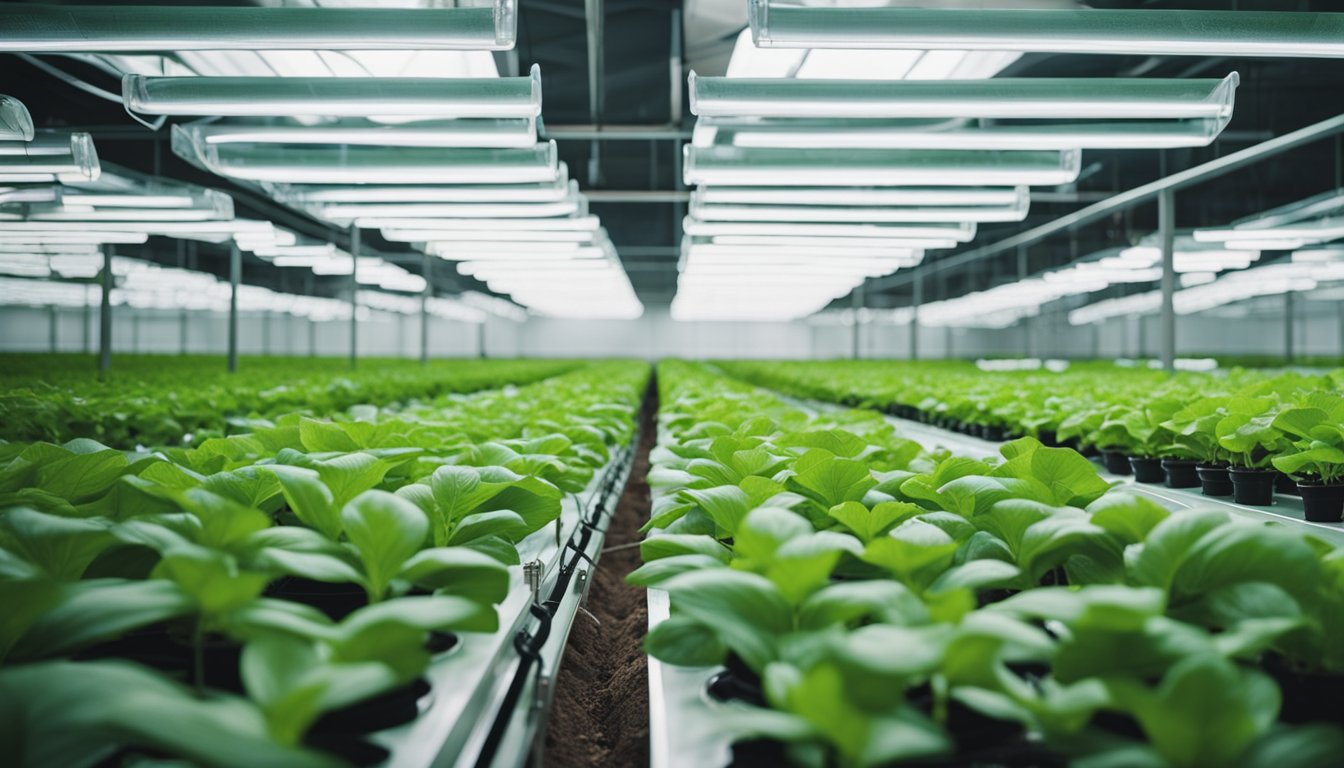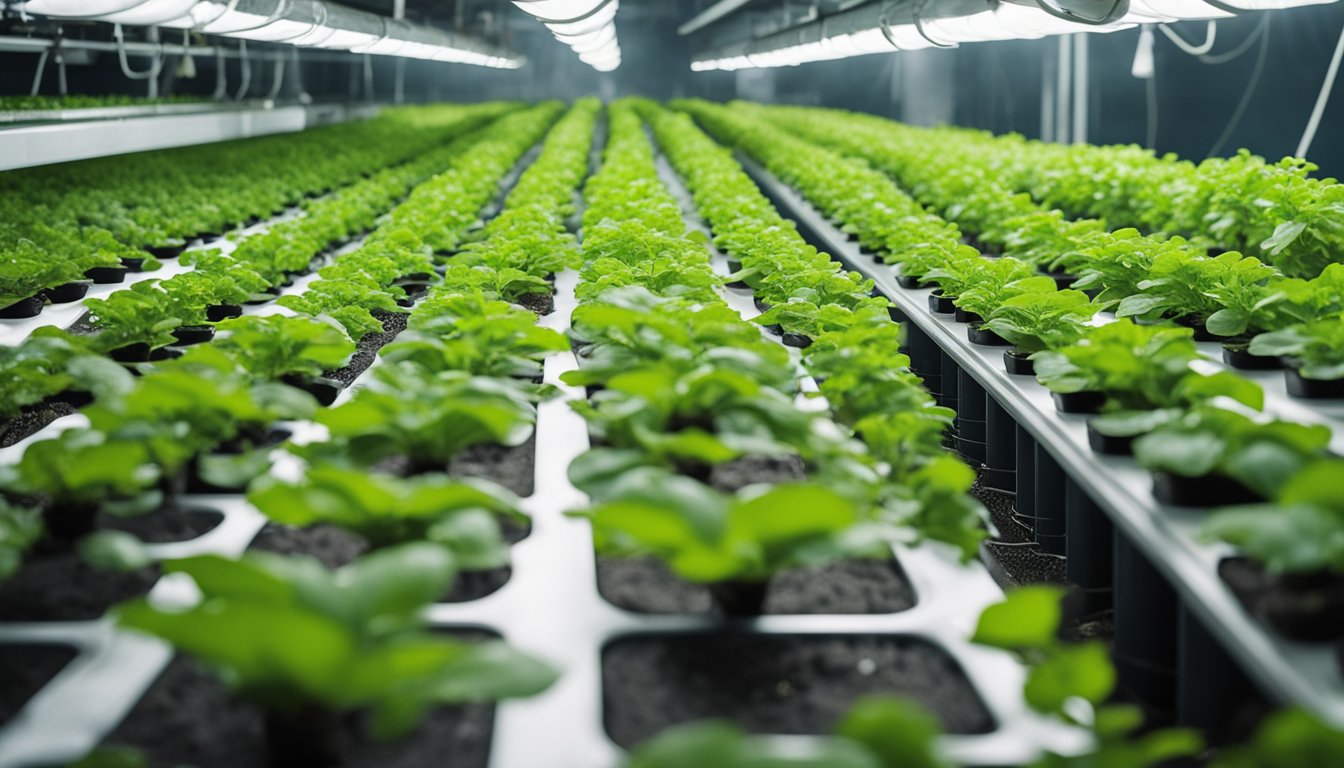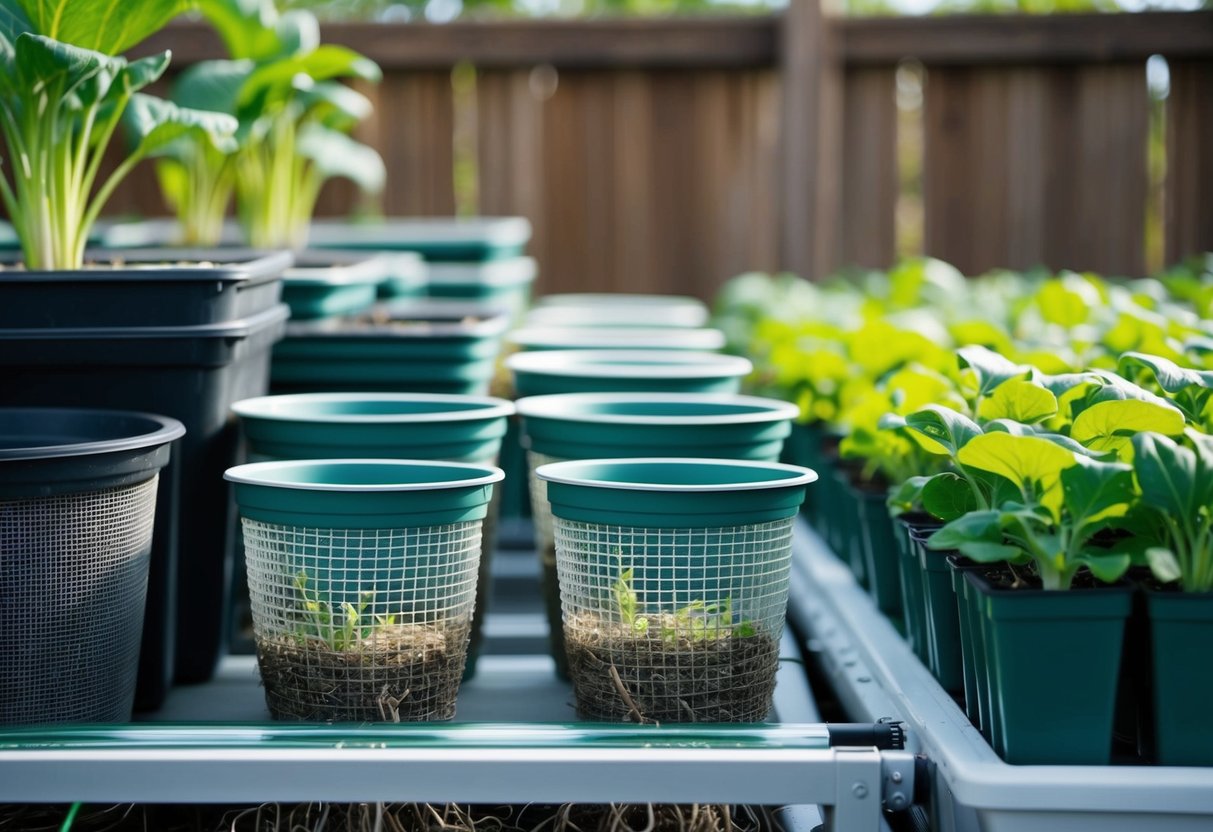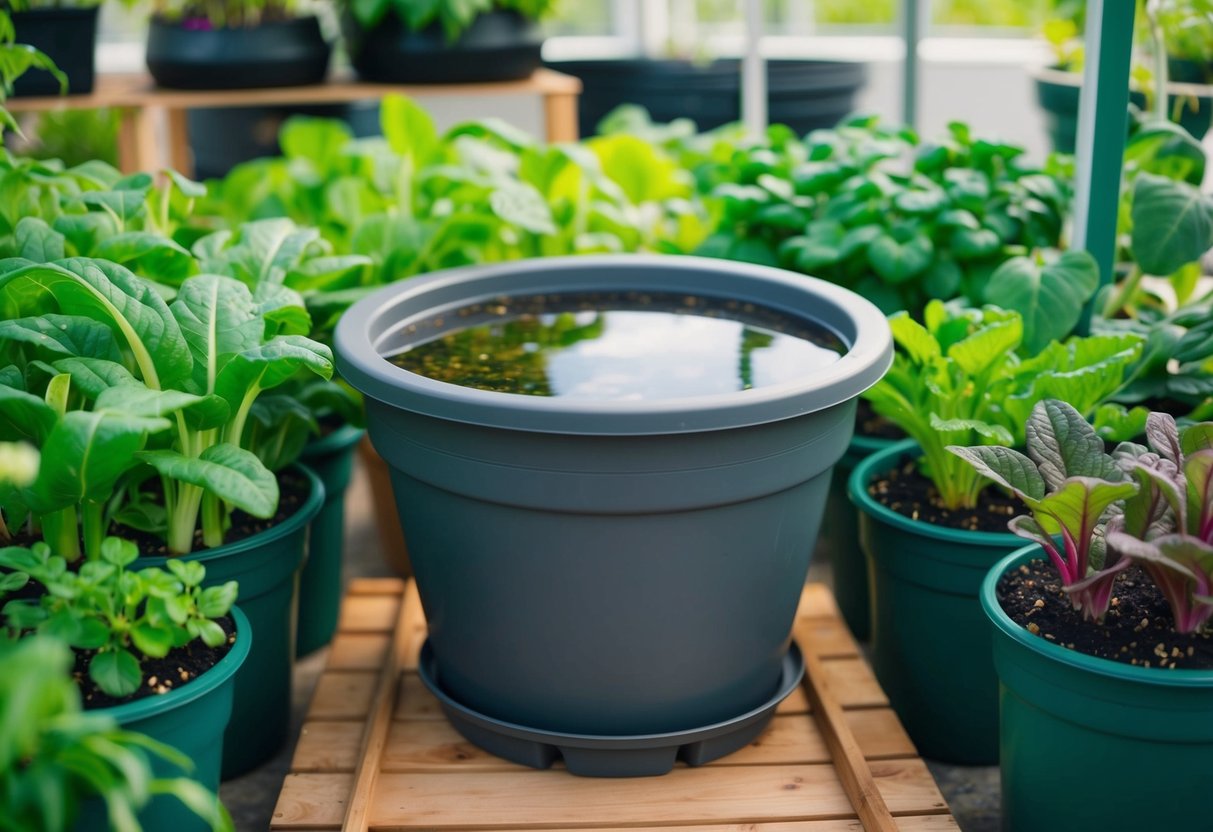Can You Do Hydroponics Outside?
The art of hydroponics has long been associated with indoor gardening, allowing us to cultivate plants in water without soil. This method uses nutrient-rich solutions to help plants grow efficiently and is often employed where space is limited. However, a common query has now emerged: can we take our hydroponics garden outside to harness natural elements for our gardens? Yes, we can successfully grow hydroponics outdoors, proving it's not just confined to indoor spaces.
Exploring the great outdoors with your hydroponic systems not only opens up space but also allows plants to benefit from natural sunlight. Embracing outdoor hydroponics provides unique advantages, such as reduced equipment needs due to the natural elements contributing to the plant's environment. Yet, this enticing prospect doesn't come without its share of challenges. Factors such as temperature fluctuations and the need for careful monitoring make it essential to adopt certain strategies for success.
Key Takeaways
- Hydroponics can be successfully grown outdoors.
- Natural light is advantageous, but monitoring environmental changes is crucial.
- Outdoor hydroponics requires fewer components than indoor setups.
Is It Possible to Grow Hydroponics Outdoors?

When we think of hydroponics, we tend to think of growing indoors with artificial lights in controlled environments. Outdoor hydroponics, however, presents an exciting opportunity to harness natural resources. This method utilises sunlight and open air, found in gardens, patios, or greenhouses.
Hydroponics grown outside will differ from indoor systems. One primary consideration is the exposure to elements like sunlight and wind. This can lead to advantages such as increased light availability and natural temperature regulation, potentially making plants grow faster and healthier.
There are several types of outdoor hydroponic systems we can explore:
-
Nutrient Film Technique (NFT): Efficient for small spaces, using a shallow stream of water with dissolved nutrients that flow over the roots.
-
Deep Water Culture (DWC): Plants are suspended in a nutrient-rich solution, providing continuous nourishment.
These systems need careful adaptation when used outdoors, such as ensuring they are protected from pests and extreme weather.
When choosing crops for outdoor systems, some options thrive exceptionally well. Leafy greens, herbs, and some vegetables, like peppers and tomatoes, are excellent choices. These plants benefit from increased sunlight and often require less water.
Outdoor hydroponic gardening offers several advantages. It's typically more eco-friendly, using less water than traditional soil methods. It's also less prone to pests and diseases, thanks to the absence of soil-borne pathogens. By experimenting with different setups, we can experience the optimal yield and enjoy fresh produce from our own outdoor gardens.
Advantages of Outdoor Hydroponics
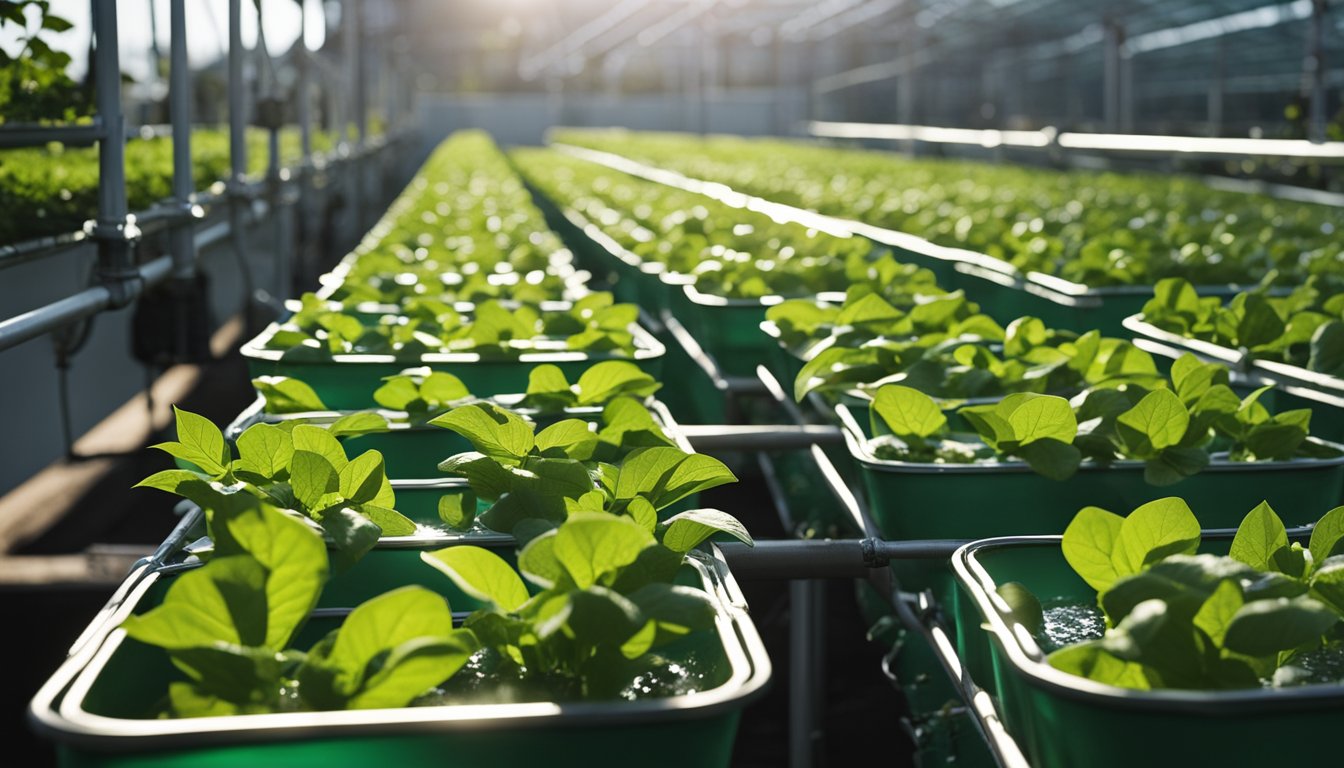
When we think about growing hydroponically outdoors, a few distinct benefits come to mind. From the abundant space and natural sunlight to cost savings and easier pollination, these aspects offer significant advantages over indoor systems.
Increased Growing Space
Having a garden or yard to set up an outdoor hydroponic garden means indoor space limitations do not constrain us. Larger hydroponic systems like nutrient film technique or ebb and flow systems can be more easily accommodated in an outdoor space.
For example, imagine a patio transformed into a thriving hydroponic garden with lines of strawberries and lettuce. By using vertical stacking or tiered setups, we can effectively maximise space and make the most of our outdoor areas.
Access to Natural Sunlight
Utilising natural sunlight is one of the biggest benefits of outdoor hydroponics: no grow lights required! This resource is both free and maximises photosynthesis for our hydroponic plants, such as kale and spinach.
Reduced Start-up Costs
By tapping into natural resources like sunlight and airflow, we can reduce initial expenses compared to growing indoors. Artificial lighting, climate control, and ventilation systems, often necessary indoors, become redundant when nature takes the reins outdoors.
When you choose to grow your plants in an outdoor hydroponics garden you could save a notable amount in equipment costs. This financial ease allows more growers to experiment or expand with types of hydroponic systems such as the deep water culture (DWC) or drip system without breaking the bank.
Natural Pollination Opportunities
One huge benefit of an outdoor setting is the effortless pollination. For crops like tomatoes and peppers, being outside enables assistance from the wind and insects for pollination.
This can be crucial for plants requiring pollination to produce fruit, and it often results in healthier crop yields. It supports a more organic method of growing and reaps the benefits of a natural ecosystem to enhance our hydroponic ventures. This symbiosis with nature enriches not just the plants but the overall growing experience.
Disadvantages of Outdoor Hydroponics
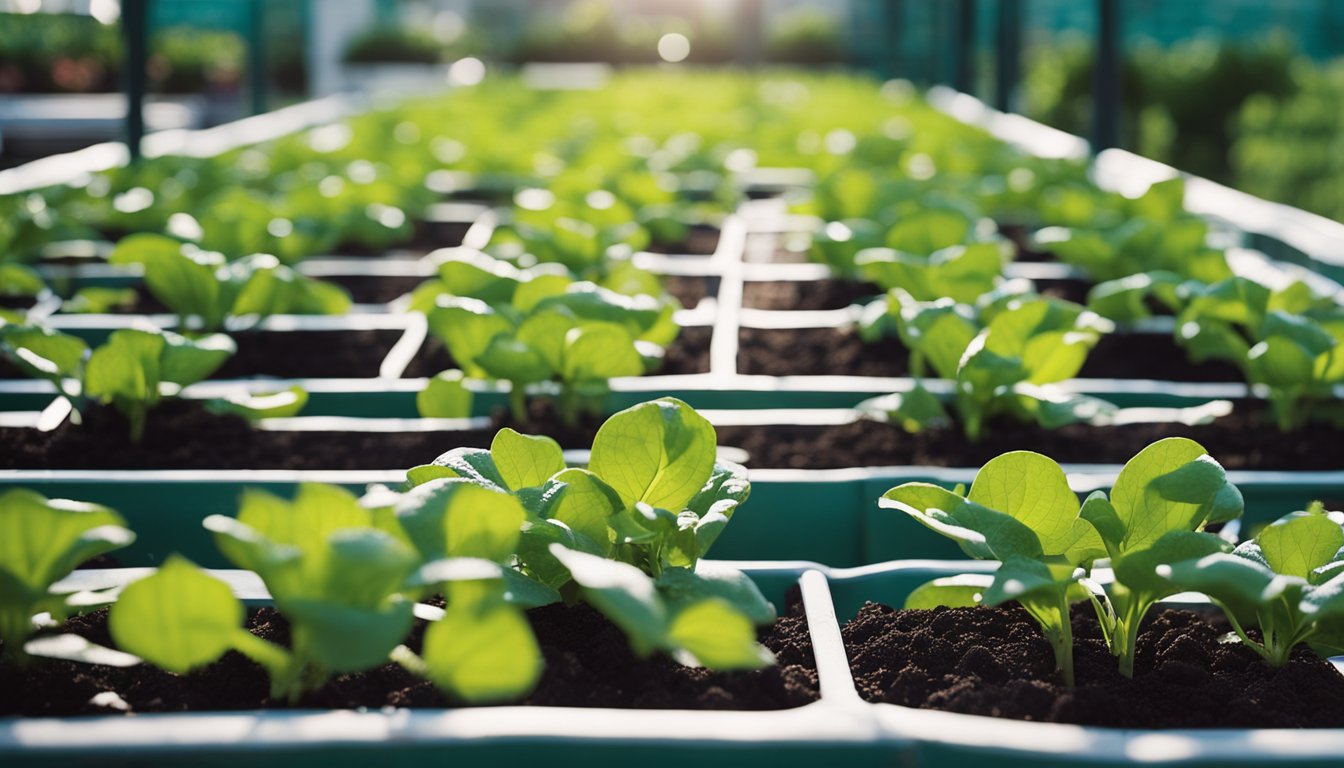
Outdoor hydroponics presents several challenges that could impact the growth and health of your plants. These include exposure to pests, lack of environmental control, limitations in winter, and potential overheating in the summer.
Pest Control Challenges
When we grow hydroponic plants outdoors, they are more vulnerable to pests, including insects and larger animals. Common pests like aphids, caterpillars, and snails can cause significant damage, eating away at leaves and disrupting plant development. Larger animals such as deer or rabbits might also see your plants as a tasty snack.
To combat these issues, we can use natural pest deterrents like neem oil or introduce beneficial insects like ladybirds. Building protective barriers such as netting or fencing is also advisable to keep larger pests away. It's essential to regularly check plants for signs of pest activity to address any issues quickly.
Lack of Environmental Control
Outdoor hydroponics systems are at the mercy of environmental factors. Unlike indoor systems, we cannot control weather conditions such as rain, temperature fluctuations, or wind. Sudden rainfall can flood the system, while high winds risk damaging plants and structures.
To mitigate these risks, it is important for us to design systems that can withstand various weather events. Using sturdy materials and securing plants properly can help. Covered grows or semi-protected environments might also buffer against severe weather impacts, adding a layer of security to the plants' setup.
Limitations in Winter Growing
Keeping outdoor hydroponic systems running in cold climates presents significant challenges. The harsh winter environment can slow down or halt plant growth altogether as nutrient solutions and plants themselves are affected by the cold. We need to ensure the hydroponic nutrient solution does not freeze, which could damage plant roots.
One method to extend the growing season is by setting up greenhouses or utilising protective covers. These structures help maintain a stable temperature, allowing us to continue growing during colder months. Insulating the nutrient tanks and using passive heating systems can also prevent freezing.
Risk of Overheating in Summer
Hot days during the summer can lead to overheating, affecting both the plants and the nutrient solution. This risk is a real concern as overheated solutions can cause root damage and reduce plant health. In hot weather, plants can become stressed, wilting or shutting down essential functions to conserve moisture.
To counteract this, we might consider shading the hydroponic system using shade cloths to reduce direct sunlight exposure. It's also important to ensure adequate airflow around the plants. Monitoring temperature and regularly changing the nutrient solution can help keep it cool, preventing overheating and prolonging the system's effectiveness.
Top Tips

Exploring outdoor hydroponics involves several key strategies to strengthen your plants and help maximise yields. Consider sunlight exposure, temperature management, controlling electrical conductivity, ensuring proper air movement, and addressing pest control for best results.
Place the System in the Sun
Choosing the right location for your outdoor hydroponic setup is crucial. Plants need ample sunlight, especially fruit-bearing varieties like tomatoes, which require energy from the sun for efficient plant growth.
During peak summer, a shade cloth may help protect plants from extreme heat, while in cooler months, repositioning might be necessary to maximise sunlight exposure. Observe the path of the sun and adjust accordingly to ensure your system reaps the benefits of natural light while avoiding sun damage.
Keep the Reservoir Cool
Maintaining a constant cool water temperature is essential for healthy roots and preventing issues like bacterial growth. Partly burying the water reservoir can provide insulation, and using technologies like cooling coils can make sure that your hydroponic water reservoir stays cool.
In hotter climates, adding frozen bottles of water or investing in a water chiller are effective strategies to regulate temperatures. Keeping an eye on water temperature helps ensure that nutrient uptake remains optimal and that roots stay healthy.
Keep EC Low
The electrical conductivity (EC) of the nutrient solution needs careful monitoring. Outdoor environments can increase evaporation, concentrating salts and nutrients, leading to potential plant stress. Regularly test EC levels and adjust the nutrient concentration as needed.
By doing so, you can maintain optimal nutrient absorption and support plant health. Seaweed extract or additional water may help in balancing EC levels, especially during warm weather when evaporation is a concern.
Provide Proper Air Movement
Air movement is a natural advantage outdoors, aiding in reducing humidity and hence minimising the risk of mould and disease. Position plants to ensure even spacing and ventilation; avoid clustering them too closely together, as this restricts airflow.
In static environments like covered systems, fans can be a simple solution to circulate air. Ensuring proper airflow enhances plant health by providing a consistent exchange of fresh air, crucial for root development and overall vitality.
Keep Pests at Bay
One of the cons of outdoor hydroponic systems is they are more susceptible to pests. However, there are several ways to combat them. Physical barriers like netting can protect against birds, while organic pest control methods such as neem oil are effective against aphids and other common nuisances.
Regular inspections of your plants are essential for early detection of problems. You can keep your garden pests free with routine checks and implementing specific strategies tailored to your environment ensures that your plants will thrive without being overrun by unwanted guests.
Conclusion
Outdoor hydroponics is a great way to grow that offers both opportunities and challenges. We can save costs by harnessing natural light and space, allowing for potentially larger and more bountiful harvests compared to indoor systems.
The use of natural sunlight helps our plants grow without the need for grow lamps or artificial lighting. There's also a greater opportunity for creativity in the design and layout of our systems with plenty of space to spread out.
However, we must not overlook potential challenges. Outdoor conditions, such as weather and pests can be significant hurdles. It's crucial to apply appropriate hydroponic equipment like proper insulation and shielding from strong winds to mitigate these factors.
It's a unique way to grow plants that lets us connect with nature while reaping the benefits of a modern and efficient gardening method. We encourage you to experiment with outdoor hydroponics, adapting practices to suit seasonal changes and learn more about the process of growing with soil-less gardening.







 Store Locator
Store Locator


